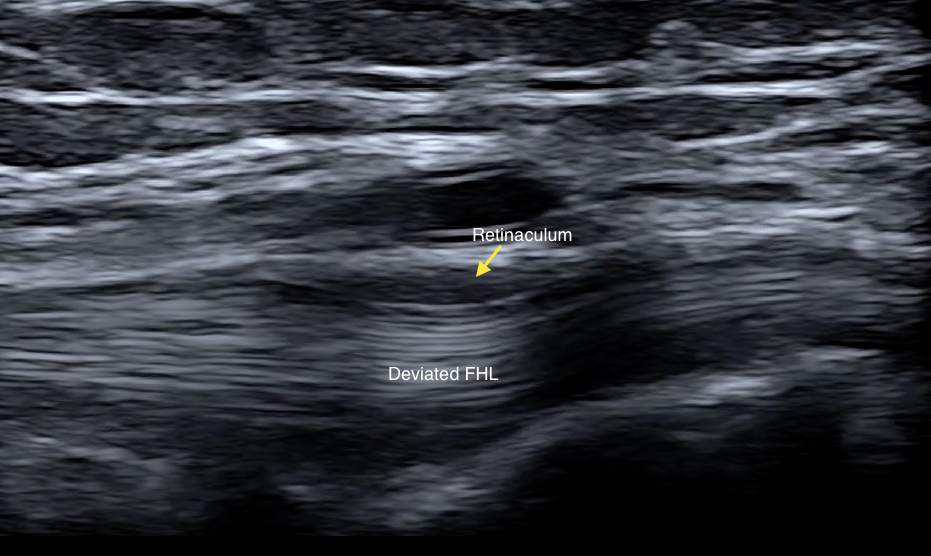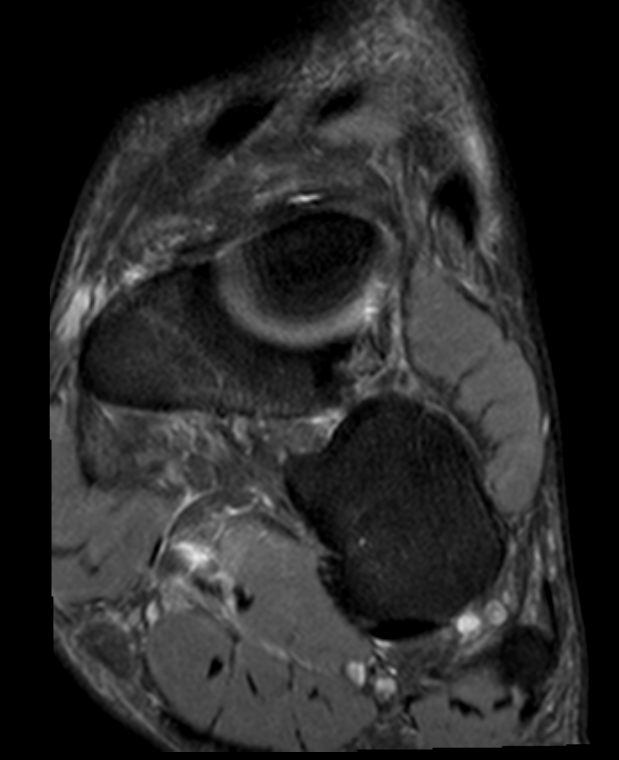Associated synovial thickening should be sought to differentiate normal fluid from tenosynovitis.
This is easier on US than MRI.
A retinaculum covers the FHL tendon as it rounds the posterior aspect of the os calcis.
Occasionally this can become thickened causing a triggering phenomena during ankle flexion and extension
This is the equivalent of De Quervains disease or Trigger finger in the hand and is also called Sclerosing Tenosynovitis
Chronic triggering or tenosynovitis can result in FHL rupture (image 2 opposite click image for full DICOM set)
Less commonly affected in isolation
More often associated with TPT disease
The FDL and FHL have to cross in the midfoot in order toreach their respective digits
The crossing point is called the Knot of Henry and an intersection type syndrome can occur in this location
This is a cause of plantar pain in runners


